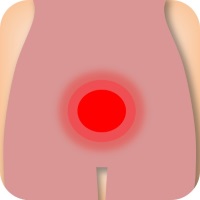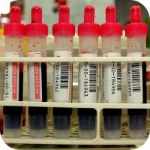
What is Pelvic Inflammatory Disease?
Pelvic Inflammatory Disease (PID) is an infection which occurs in the woman’s upper reproductive tract, which consists of the uterus, fallopian tubes and the ovaries.
Pelvic Inflammatory Disease Causes
PID is usually caused by an infection with a bug (usually bacteria), often transmitted through sex or sexual contact, and on rare occasion from injury or surgery to your abdomen.
The infection spreads up through the reproductive tract and causes inflammation of the tissues. This can result in scar tissue forming (known as adhesions) and damage to the affected organs. Small collections of pus, called abscesses, may also develop.
This can have the effect of causing the fallopian tubes to become blocked, or sometimes these can swell with fluid, resulting in what is known as a hydrosalpinx.
These effects can all reduce a woman’s fertility and ability to get pregnant.
What are the chances of having Pelvic Inflammatory Disease?
Up to 90% of the cases of Pelvic Inflammatory Disease are caused by infection with Chlamydia or Gonorrhoea, and infections with these bacteria are unfortunately increasing.
Pelvic Inflammatory Disease Symptoms
In the majority of cases the first stages of the infection do not produce symptoms.
As the infection progresses the woman may experience pelvic pain, internal pain during sex, and bleeding in between periods.
Women may also develop a urinary tract infection, with the typical symptoms of burning or stinging on passing urine, needing to go to the toilet more frequently and passing only small amounts of urine at a time. Sometimes the symptoms of a urinary tract infection can confuse the situation, with this being treated whilst the sexually transmitted infection remains undiagnosed.
If the infection becomes worse, a fever may develop and you may feel generally unwell.
Pelvic Inflammatory Disease Diagnosis
If you have symptoms suggestive of Pelvic Inflammatory Disease, then your doctor will perform tests such as an STI test swab and maybe blood tests to identify the responsible bacteria causing the infection.
If you are concerned that you may have a STD then I recommend that you visit a sexual health clinic (or GUM clinic) or see your doctor for tests. Diagnosis can be made with a urine test, vaginal swab, blood test, or combination of these. You can read more about this in the section STDs and Infertility.
Pelvic Inflammatory Disease Treatment
Treatment of the infection which causes Pelvic Inflammatory Disease is with a course of antibiotics. Always ensure you complete any course of antibiotics given to you by your doctor.
Treatment of the more permanent complications of pelvic inflammatory disease depends upon the individual effects that the infection has caused:
- Blocked fallopian tubes can sometimes be opened up by removing the adhesions surgically
- A fallopian tube which is swollen with fluid (hydrosalpinx) can sometimes be drained, as can any remaining abscesses
PID Associated Problems
If you have or think you might have PID, you may also want to read the sections Infections and Diseases and STDs and Infertility. Both these sections cover possible ways you may have contracted PID.
Links to Popular Related Pages








